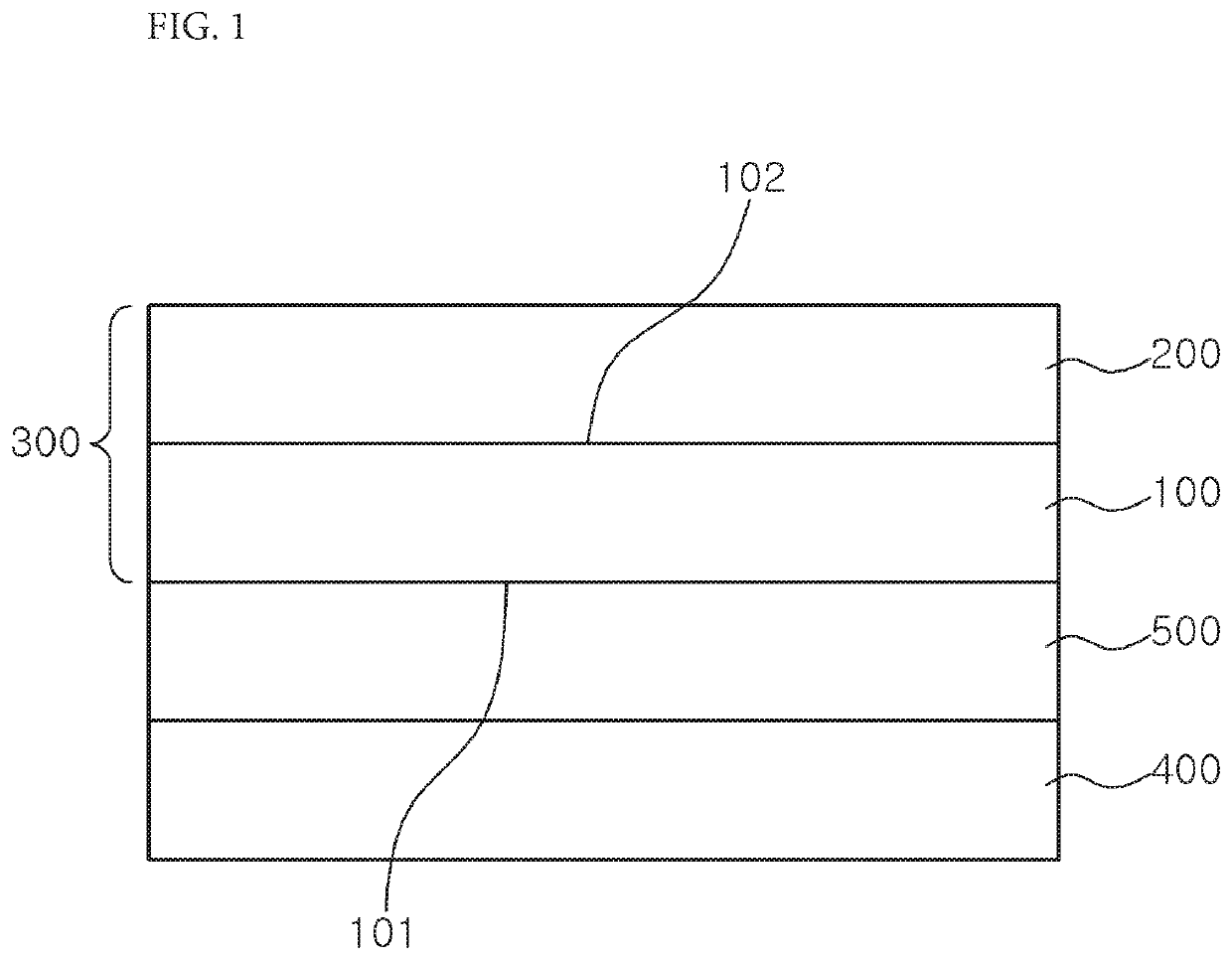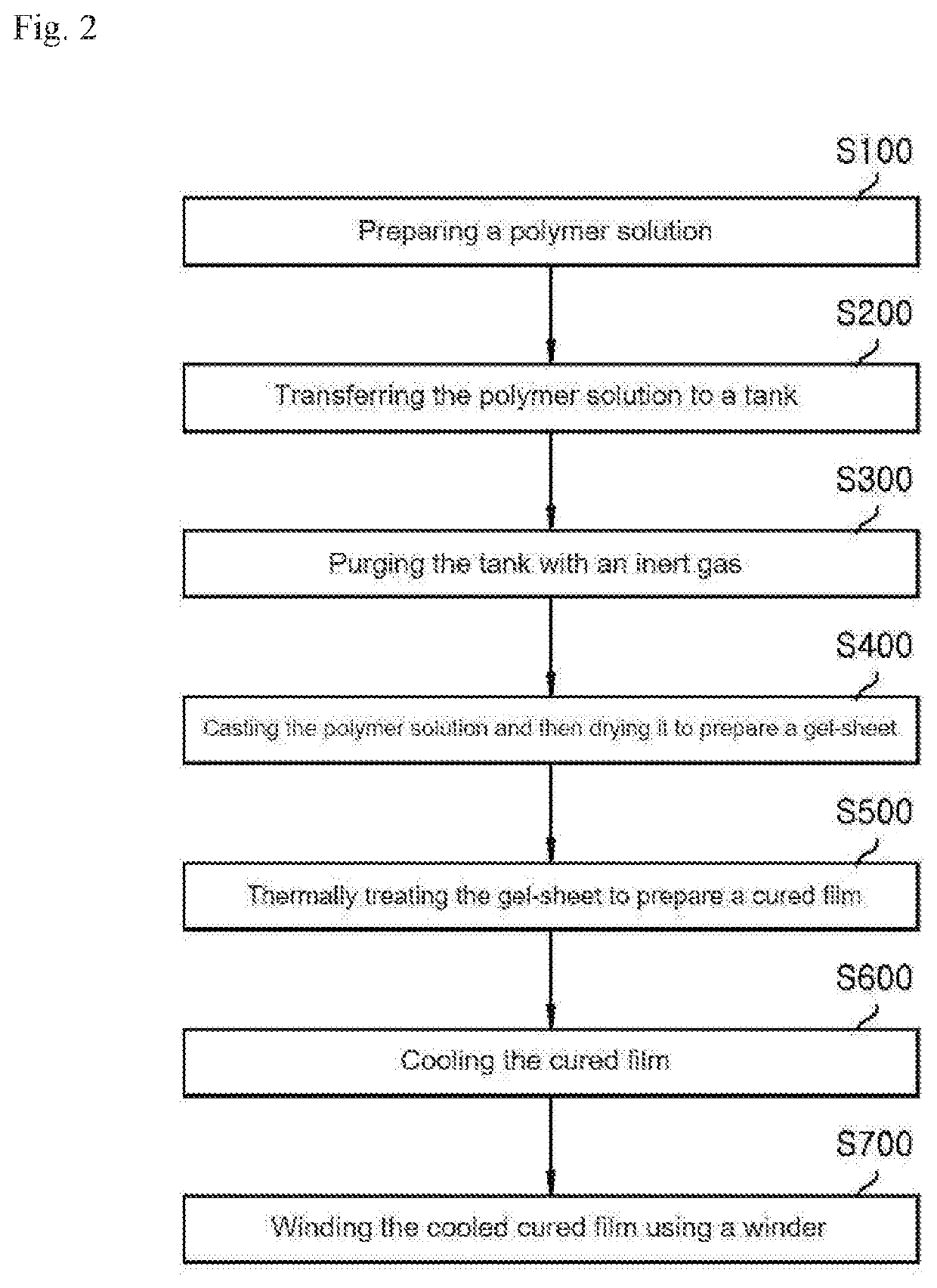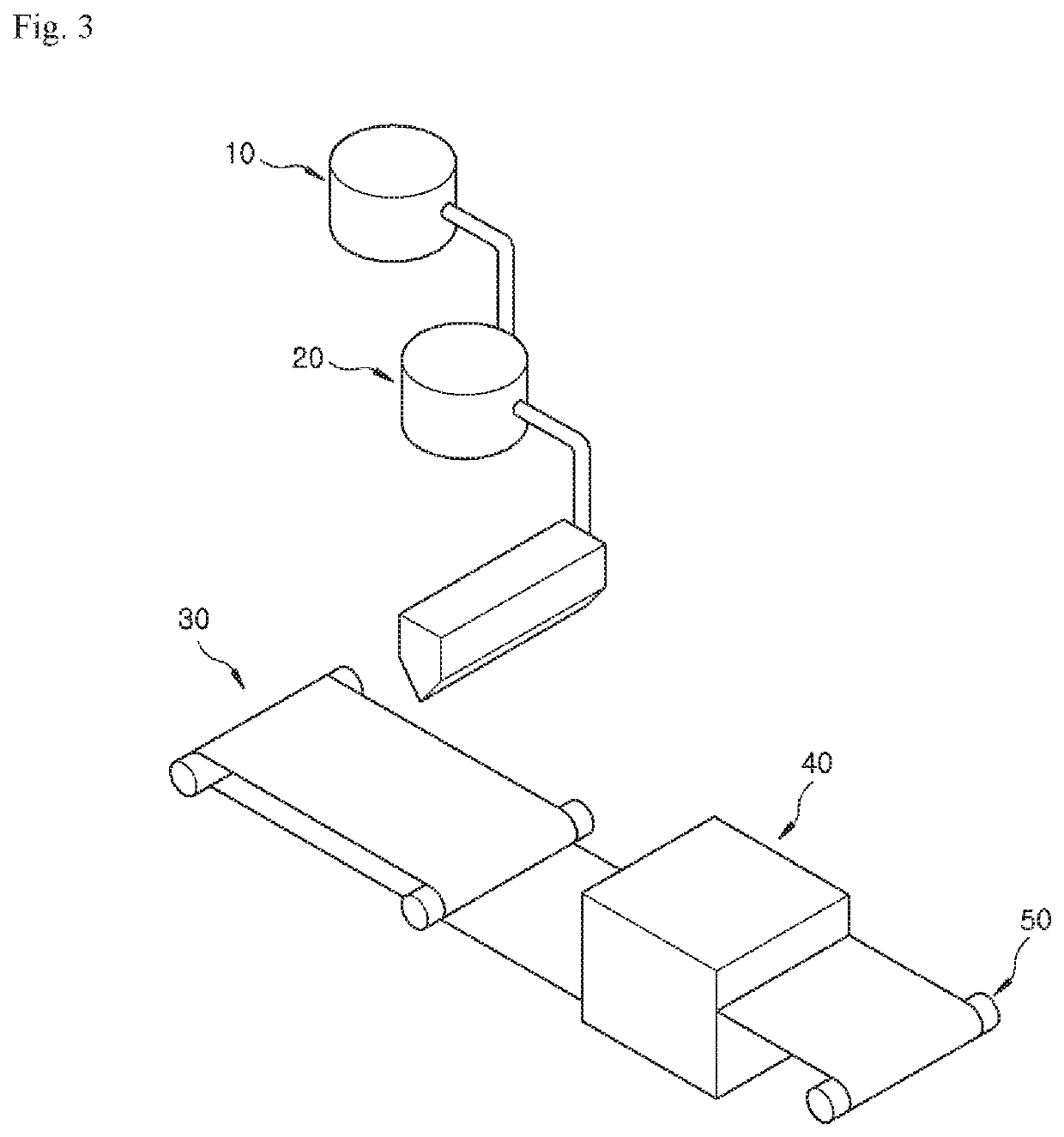Polyamide-based film, preparation method thereof, and cover window comprising same
a polyamide-based film and film-based technology, applied in the field of polyamide-based films, can solve the problems of deterioration of optical properties, lack of original screen color implementation angle, loss of angle of view, etc., and achieve excellent optical properties, low haze, and high transmittance
- Summary
- Abstract
- Description
- Claims
- Application Information
AI Technical Summary
Benefits of technology
Problems solved by technology
Method used
Image
Examples
example
Example 1a
[0335]A 1-liter glass reactor equipped with a temperature-controllable double jacket was charged with 779.1 g of dimethylacetamide (DMAc) as an organic solvent at 20° C. under a nitrogen atmosphere. Then, 64 g (0.2 mole) of 2,2′-bis(trifluoromethyl)-4,4′-diaminobiphenyl (TFMB) was slowly added thereto and dissolved. Subsequently, 4.44 g (0.01 mole) of 2,2′-bis(3,4-dicarboxyphenyl)hexafluoropropane dianhydride (6FDA) was slowly added thereto, and the mixture was stirred for 1 hour. Then, 12.2 g (0.06 mole) of isophthaloyl chloride (IPC) was added, followed by stirring for 1 hour. And 26.43 g (0.13 mole) of terephthaloyl chloride (TPC) was added, followed by stirring for 1 hour, thereby preparing a polymer solution.
[0336]Subsequently, a barium sulfate dispersion (solids content: 18.2% by weight and organic solvent: DMAc) was added to the polymer solution and stirred.
[0337]The polymer solution thus obtained was coated onto a glass plate and then dried with hot air at 80° C. f...
example 2a
[0340]Films were prepared in the same manner as in Example 1a, except that the types and contents of the respective reactants and the like were changed as shown in Table 1 below.
example 1b
[0341]A 1-liter glass reactor equipped with a temperature-controllable double jacket was charged with 779.1 g of dimethylacetamide (DMAc) as an organic solvent at 20° C. under a nitrogen atmosphere. Then, 64 g (0.2 mole) of 2,2′-bis(trifluoromethyl)-4,4′-diaminobiphenyl (TFMB) was slowly added thereto and dissolved. Subsequently, 21.3 g (0.048 mole) of 2,2′-bis(3,4-dicarboxyphenyl)hexafluoropropane dianhydride (6FDA) was slowly added thereto, and the mixture was stirred for 1 hour. Then, 2.44 g (0.012 mole) of isophthaloyl chloride (IPC) was added, followed by stirring for 1 hour. And 28.42 g (0.14 mole) of terephthaloyl chloride (TPC) was added, followed by stirring for 1 hour, thereby preparing a polymer solution. Thereafter, 500 ppm of silica (average particle diameter of 100 nm to 150 nm) was added as a matting agent to the polymer solution thus prepared based on the total weight of the polyamide-based polymer, which was stirred.
[0342]The polymer solution thus obtained was coate...
PUM
| Property | Measurement | Unit |
|---|---|---|
| thickness direction retardation | aaaaa | aaaaa |
| thickness direction retardation | aaaaa | aaaaa |
| particle diameter | aaaaa | aaaaa |
Abstract
Description
Claims
Application Information
 Login to View More
Login to View More - R&D
- Intellectual Property
- Life Sciences
- Materials
- Tech Scout
- Unparalleled Data Quality
- Higher Quality Content
- 60% Fewer Hallucinations
Browse by: Latest US Patents, China's latest patents, Technical Efficacy Thesaurus, Application Domain, Technology Topic, Popular Technical Reports.
© 2025 PatSnap. All rights reserved.Legal|Privacy policy|Modern Slavery Act Transparency Statement|Sitemap|About US| Contact US: help@patsnap.com



